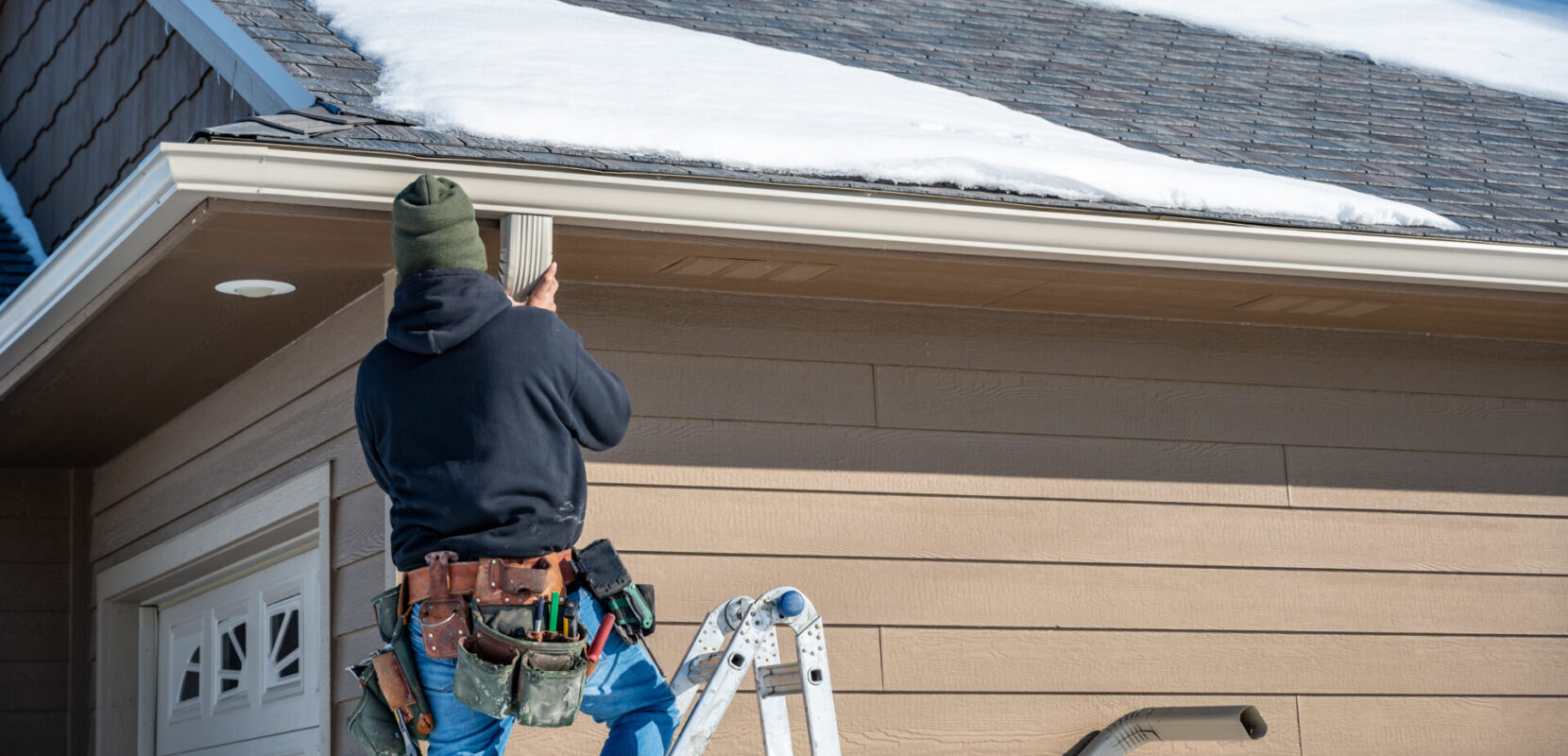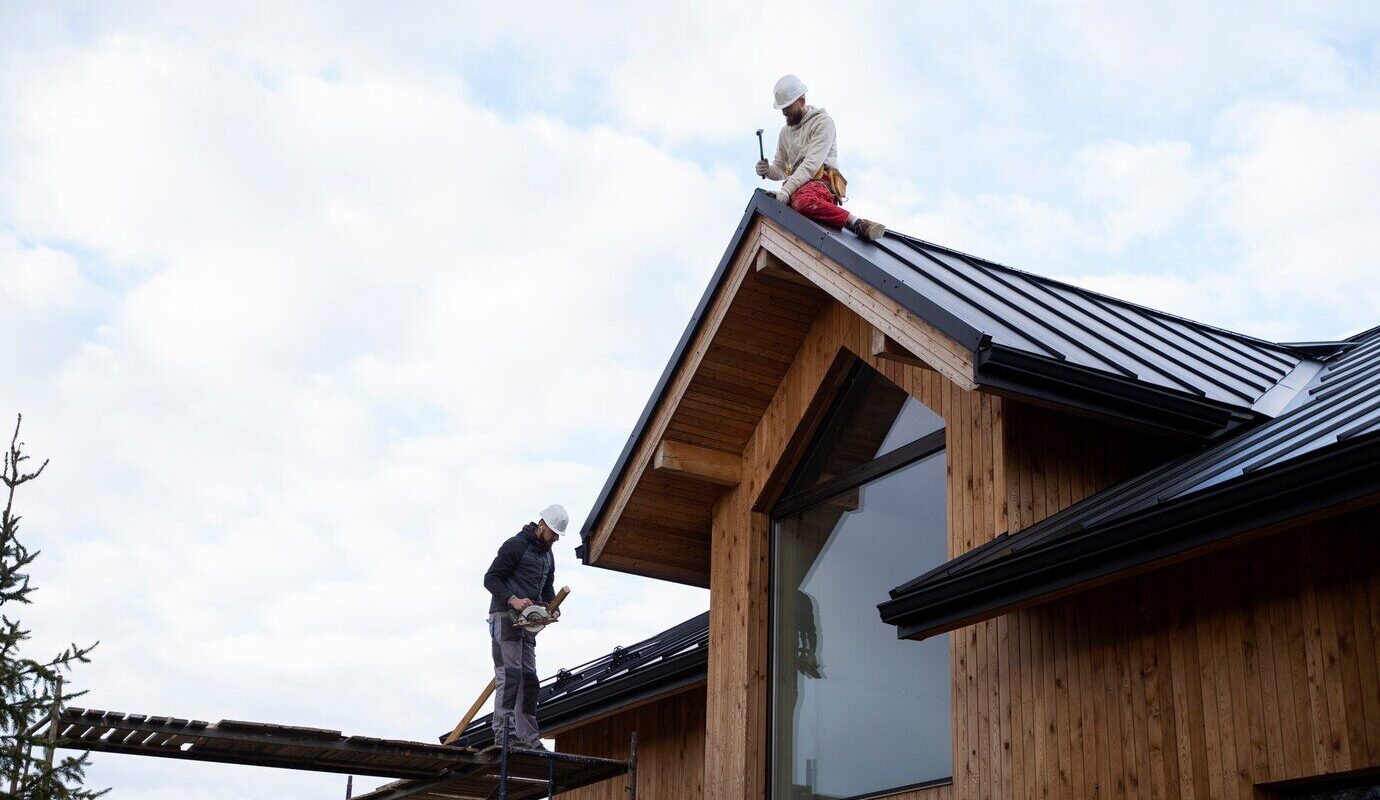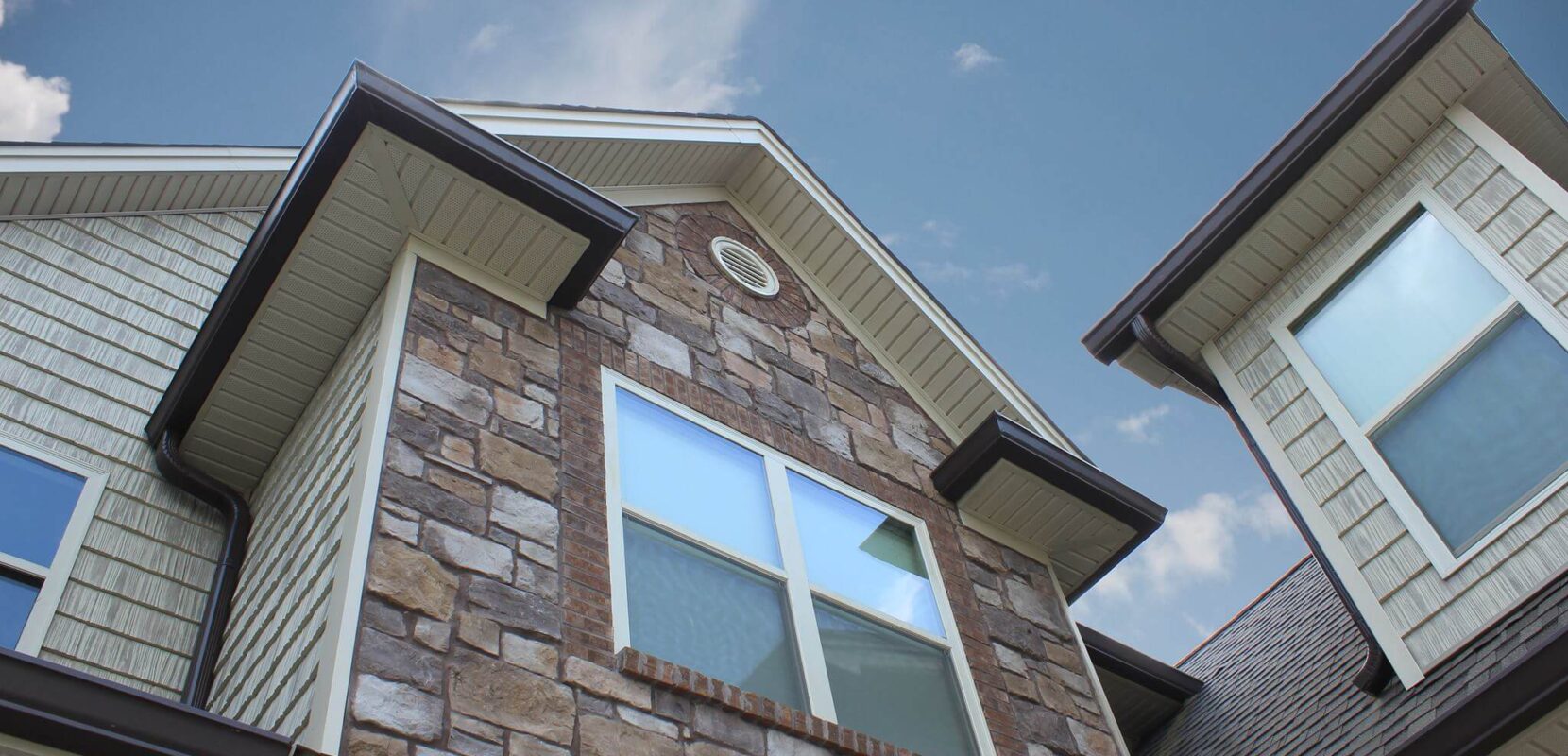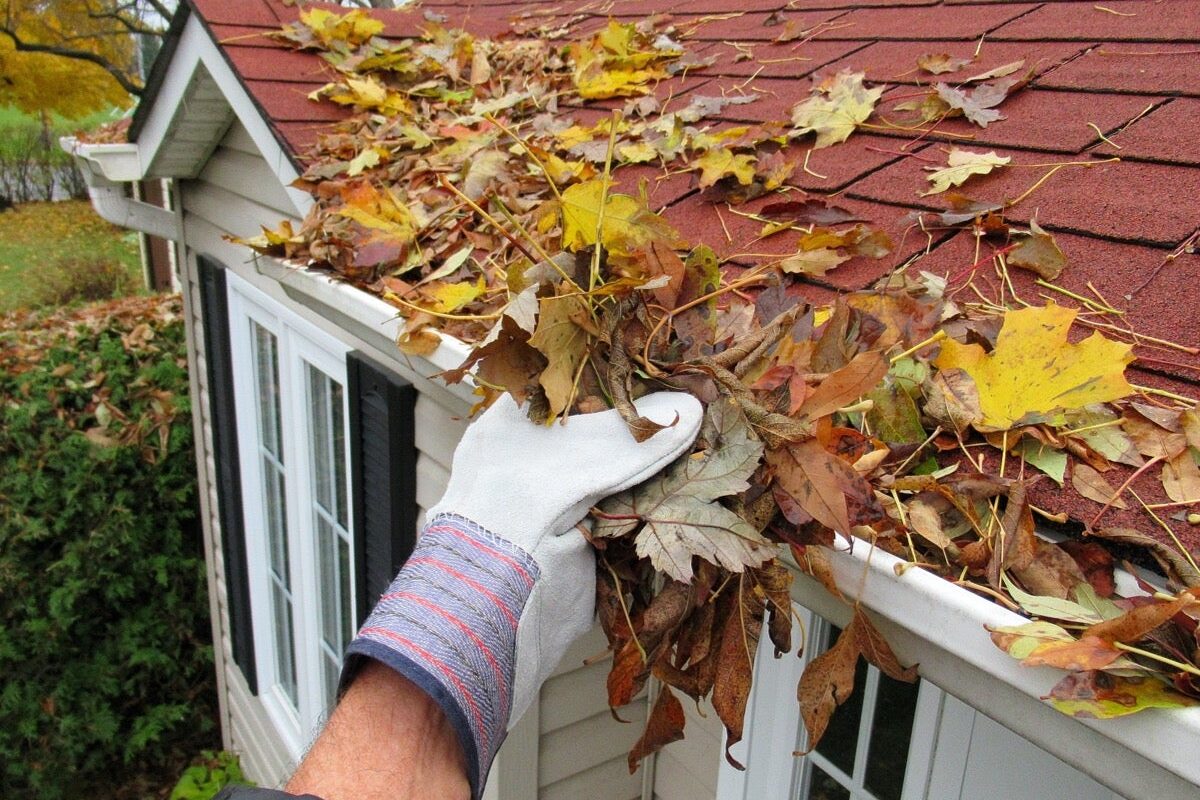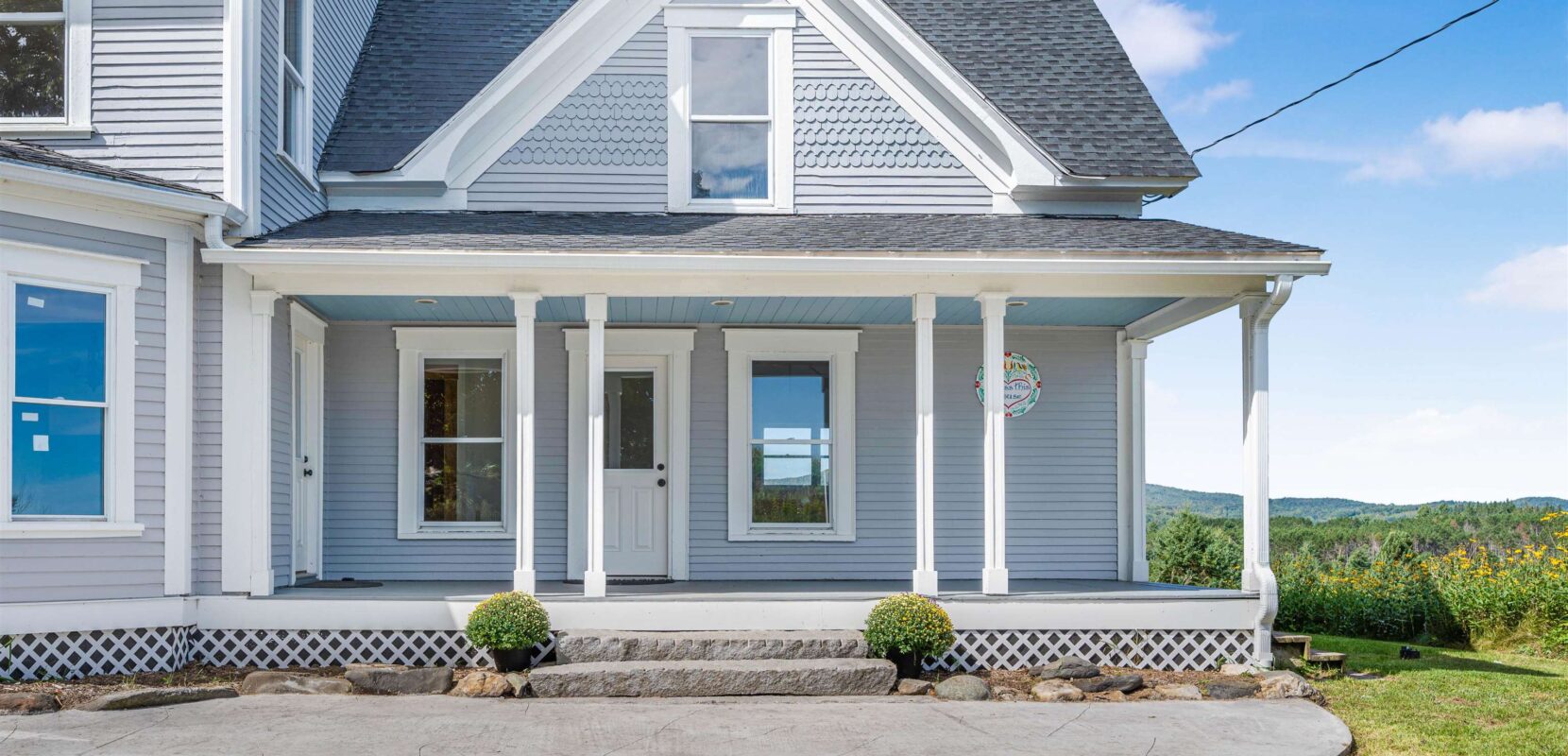Winter brings unique challenges to your home’s gutter system. The combination of freezing temperatures, snow accumulation, and harsh winds can wreak havoc on your gutters and roof, potentially leading to significant structural damage.
Your gutters play a vital role in protecting your home by channeling water away from your foundation. During winter months, these drainage systems face severe stress from:
- Heavy snow loads causing structural strain
- Ice formation blocking water flow
- Freeze-thaw cycles creating cracks
- Wind-driven debris causing blockages
The cost of repairing winter-related gutter damage can range from hundreds to thousands of dollars. A damaged gutter system can lead to:
- Foundation problems
- Basement flooding
- Interior water damage
- Mold growth
- Roof deterioration
Taking preventive measures before and during winter isn’t just about maintaining your gutters – it’s about protecting your entire home’s structural integrity. Understanding these winter weather impacts and implementing proper maintenance strategies can save you significant repair costs and preserve your home’s value.
To ensure your gutters are ready for the winter, it may be beneficial to consult with professionals such as those listed in the Vermont Gutter Company member directory. Their expertise could help in avoiding common winter-related gutter issues.
If you’re already facing problems with your gutters, it’s crucial to address them promptly. For example, Terry L. Rivera is a professional who specializes in gutter repairs and maintenance; you might want to consider reaching out to him through his profile on Vermont Gutter Company’s website.
Moreover, if you’re looking for inspiration or ideas for gutter styles that can withstand harsh winter conditions, you might find some useful examples in the portfolio section of the Vermont Gutter Company website.
Lastly, if you encounter any issues while trying to access their services online, such as an order failure, don’t hesitate to check their order failed page for assistance.
Understanding the Impact of Winter Weather on Gutters
Winter snow presents significant challenges for your home’s gutter system. A single cubic foot of wet snow weighs approximately 20 pounds, creating substantial stress on your gutters. This snow load can trigger immediate structural issues:
- Gutter Sagging: Heavy snow accumulation pulls gutters away from their mounting points
- Bracket Failure: Mounting brackets crack or break under excessive weight
- Complete Collapse: Extreme snow loads can cause entire gutter sections to fall, leading to structural failure in buildings
Your gutters face additional risks when snow begins to melt:
- Water refreezing inside gutters
- Uneven weight distribution
- Metal fatigue from constant pressure
Prevention Through Regular Maintenance
Proper snow management requires a proactive approach:
- Use roof rakes to remove snow within 3-6 feet of your gutters
- Check gutter brackets monthly during winter
- Remove visible ice buildup safely from ground level
- Schedule professional inspections before and during winter with a best gutter company
Signs of Structural Damage to Watch
- Visible bending or warping
- Gaps between gutters and fascia
- Water marks on exterior walls
- Loose or missing brackets
Professional inspection reveals hidden damage and prevents costly repairs. Experts recommend checking your gutters after every major snowfall to identify potential issues early.
If you’re experiencing severe problems with your gutters due to winter weather, it may be time to consult with a professional like Roslyn H. Cabrera who specializes in this field. You can also explore some of their previous work in the gallery for reference.
Ice dams create a dangerous cycle of damage to your home’s roofing system. These formations occur when heat escapes through your roof, creating an uneven surface temperature. The warm upper portion of your roof melts snow, which then flows down to the colder eaves and refreezes, creating a barrier of ice.
This ice barrier prevents proper drainage, forcing water to back up under your shingles. The trapped water can:
- Seep into your walls and ceilings
- Cause paint to peel
- Create dangerous mold growth
- Rot wooden structures
- Damage insulation
Prevention starts in your attic
Your attic plays a crucial role in preventing ice dams. A properly maintained attic should include:
- R-60 insulation levels for northern climates
- Adequate ventilation through soffit and ridge vents
- Sealed air leaks around light fixtures and ductwork
- A properly installed vapor barrier
Signs of Ice Dam Formation
Watch for these warning signals:
- Icicles hanging from your gutters
- Ice buildup along roof edges
- Water stains on interior ceilings
- Damp insulation in your attic
Professional heat cable installation along your roof’s edge provides additional protection against ice dam formation. These cables maintain a consistent temperature, creating clear paths for melting snow to drain properly through your gutter system.
To ensure proper drainage and prevent ice dam formation, it’s essential to have well-maintained gutters. Consider exploring our commercial gutter options for robust solutions. Additionally, our construction services can assist in ensuring that your home is built or renovated with the right materials and techniques to further reduce the risk of ice dams. If you’re looking to improve other areas of your home, such as the kitchen or bathroom, we also offer specialized home, bath, and kitchen services that could be beneficial.
Dealing with Frozen Gutters and Downspouts: Causes and Solutions
Frozen gutters create a cascade of problems for your home’s drainage system. When temperatures drop below freezing, any remaining water in your gutters turns to ice, forming solid blockages that prevent proper water flow.
Common Signs of Frozen Gutters:
- Icicles hanging from gutters
- Visible ice buildup inside gutters
- Water overflow during warmer days
- Sagging or pulled-away gutters
The weight of ice can cause significant structural damage to your gutter system. A single cubic foot of ice weighs approximately 57 pounds – enough to compromise your gutters’ integrity and attachment to your home.
Effective Prevention Methods:
Professional gutter guards act as a physical barrier, preventing leaves and debris from entering your gutter system while allowing water to flow freely. These systems significantly reduce ice formation risks and minimize maintenance requirements.
Quick Solutions for Frozen Gutters:
- Use calcium chloride ice melt products
- Install heated gutter cables
- Remove snow from roof edges with a roof rake
- Create channels in ice blockages for water flow
Remember: Never attempt to break or chip away ice from frozen gutters – this can cause permanent damage to your gutter system and potentially create safety hazards.
If the frozen conditions persist and cause extensive damage, it might be time to consider a gutter installation or even explore the advantages of replacing your gutters in 2023. Additionally, understanding the difference between rain gutters and traditional ones could also help in making informed decisions about your home’s drainage system.
The Detrimental Effects of Freeze-Thaw Cycles on Gutters and Roofs
Freeze-thaw cycles create a destructive pattern that can severely damage your home’s gutter system and roofing materials. When water seeps into small cracks or gaps, it expands by approximately 9% as it freezes, pushing against the surrounding materials. This expansion forces these tiny cracks to grow larger with each cycle.
How Freeze-Thaw Cycles Affect Your Gutters
Your gutters face particular vulnerability during these cycles:
- Metal Fatigue: Repeated expansion and contraction weaken metal gutters, leading to splits and separations at seams
- Joint Stress: Connection points between gutter sections experience increased pressure, causing them to pull apart
- Material Deterioration: The constant stress accelerates the breakdown of both metal and plastic components
How Freeze-Thaw Cycles Affect Your Roof
The impact on roofing materials proves equally concerning:
- Shingles develop larger cracks and begin to curl
- Flashing around chimneys and vents loosens
- Roof decking warps from moisture penetration
Pre-Winter Protection Steps:
- Inspect all gutter seams and joints
- Apply appropriate sealants to existing cracks
- Check roof flashing for gaps or separation
- Replace damaged or deteriorating shingles
- Seal any visible cracks in roofing materials
A professional inspection can identify vulnerable areas you might miss. Small repairs made before winter cost significantly less than addressing major damage after freeze-thaw cycles take their toll.
Protecting Your Gutters from Wind Damage During Winter Storms
Winter storms bring powerful winds that can seriously damage your home’s gutter system. High-speed winds can:
When shingles become compromised, your roof becomes vulnerable to moisture penetration. Water can seep beneath loose shingles, potentially causing:
Pre-Winter Inspection Checklist:
Check gutter brackets and fasteners
- Tighten loose screws
- Replace rusted hardware
- Reinforce weak attachment points
Examine gutter seams
- Look for separation between sections
- Apply appropriate sealant where needed
- Replace damaged joint connectors
Assess shingle condition
You can strengthen your gutter system by installing additional support brackets every 2-3 feet along the run. Professional gutter services can add heavy-duty hangers designed specifically for areas prone to high winds. These reinforcements help maintain your gutter system’s integrity during severe winter weather conditions.
Preventing Condensation Issues in Attics: The Role of Proper Ventilation Systems
Your attic plays a crucial role in protecting your home’s gutter system during winter. When warm air from your living spaces rises and meets cold attic surfaces, it creates a perfect environment for condensation to form. This moisture buildup can trigger a chain reaction of problems:
- Structural Damage: Persistent condensation can weaken wooden roof components
- Insulation Deterioration: Wet insulation loses its effectiveness
- Mold Growth: Damp conditions create ideal breeding grounds for harmful mold
- Ice Dam Formation: Excess moisture contributes to ice dam development
A well-ventilated attic maintains a consistent temperature and reduces moisture accumulation. Here’s what proper attic ventilation looks like:
- Intake vents at the eaves or soffits
- Exhaust vents at or near the roof ridge
- A balanced airflow ratio (50:50 intake to exhaust)
- Clear pathways for air movement
You can optimize your attic ventilation by:
- Installing ridge vents along the roof peak
- Adding soffit vents under the eaves
- Maintaining a clear path between soffit and ridge vents
- Using attic fans in particularly problematic areas
Proper attic ventilation also helps extend the life of your roofing materials and reduces energy costs. Regular inspections of your attic ventilation system ensure it continues functioning effectively throughout the winter season.
Maintaining Clear Gutters: The Importance of Regular Debris Removal Throughout Winter Months
Winter brings unique challenges to gutter maintenance as debris clogging gutters becomes a persistent issue. Different types of debris accumulate in your gutters during the cold season:
- Pine needles and leaves – These create dense mats that trap moisture
- Small twigs and branches – Often blown in by winter storms
- Ice fragments – Can mix with debris to form solid blockages
- Granules from shingles – Commonly shed during freeze-thaw cycles
Blocked gutters prevent proper water drainage, leading to:
To avoid these issues, it’s essential to understand how to take care of your gutters this winter, including regular debris removal.
However, it’s not always easy to tell when your gutters are clogged. Here are some signs that indicate clogged gutters you should watch out for:
- Water overflow during rainfall
- Presence of icicles forming along the edges of the roof
- Unpleasant odors from stagnant water
- Visible plant growth in the gutter
- Peeling paint or rust from the downspouts
- Signs of pest infestation around the gutter area
Safe Debris Removal Tips:
- Use a sturdy ladder with stabilizers
- Wear thick rubber gloves for protection
- Remove debris by hand or with a small plastic scoop
- Flush remaining debris with a garden hose on warmer days
- Install mesh screens to reduce future accumulation
Professional Cleaning Schedule:
- Early winter (before first freeze)
- Mid-winter (during thaw periods)
- Late winter (preparation for spring rains)
You can spot check your gutters after major storms by looking for overflow during rainfall or icicles forming along the edges. A clean gutter system protects your home’s structural integrity throughout the winter months.
Remember to inspect downspouts for blockages – they’re often overlooked but crucial for proper drainage. Clear any obstructions at ground level where downspouts connect to underground drainage systems.
Proactive Measures Homeowners Can Take Against Winter Weather Damage
Schedule Regular Roof Inspections
Regular roof inspections serve as your first line of defense against winter weather damage. Schedule professional inspections twice yearly – once in late fall before winter hits, and again in early spring to assess any winter damage.
Key inspection areas include:
- Shingle condition and alignment
- Flashing around chimneys and vents
- Gutter attachment points
- Signs of sagging or structural stress
- Evidence of previous ice dam formation
Professional inspectors can spot early warning signs of potential issues, helping you address problems before they escalate into costly repairs. They’ll check your attic’s insulation levels and ventilation systems – critical components in preventing ice dams and moisture buildup.
Perform DIY Monthly Checks
In addition to professional inspections, conduct your own monthly checks to identify any visible signs of damage or potential problems.
DIY monthly checks should focus on:
- Visible damage to gutters or downspouts
- Water stains on interior ceilings
- Icicle formation along roof edges
- Proper drainage during thaws
Remember: catching issues early through regular inspections costs significantly less than emergency repairs from unaddressed winter weather damage.
Frequently Asked Questions
Winter weather can significantly impact gutters due to heavy, wet snow and ice formation. This can lead to sagging or even collapse of the gutter system. Regular inspections and timely snow removal are crucial in preventing these issues.
Ice dams form when warm air from the attic melts snow on the roof, which then refreezes at the eaves, creating a blockage. This can cause water backup, leading to potential damage to both roofing and gutters. Improving attic insulation and ensuring proper ventilation are effective preventative strategies.
Frozen gutters often occur due to freezing temperatures causing ice blockages that impede drainage. To prevent this, regularly clean out gutters and consider installing gutter guards to minimize the risk of ice accumulation.
Freeze-thaw cycles occur when water freezes and thaws repeatedly, leading to the enlargement of cracks in roofing materials and gutters over time. Sealing any existing cracks before winter arrives is essential for maintaining the integrity of your systems.
High winds during winter storms can dislodge shingles, exposing roofs to moisture that can seep into gutters. Conducting pre-winter inspections helps identify vulnerabilities such as loose shingles that may be at risk during storms.
Debris like leaves and branches tend to accumulate in gutters during winter, which can obstruct proper drainage. Regularly removing this debris ensures that your gutter system functions effectively and prevents potential water damage.


